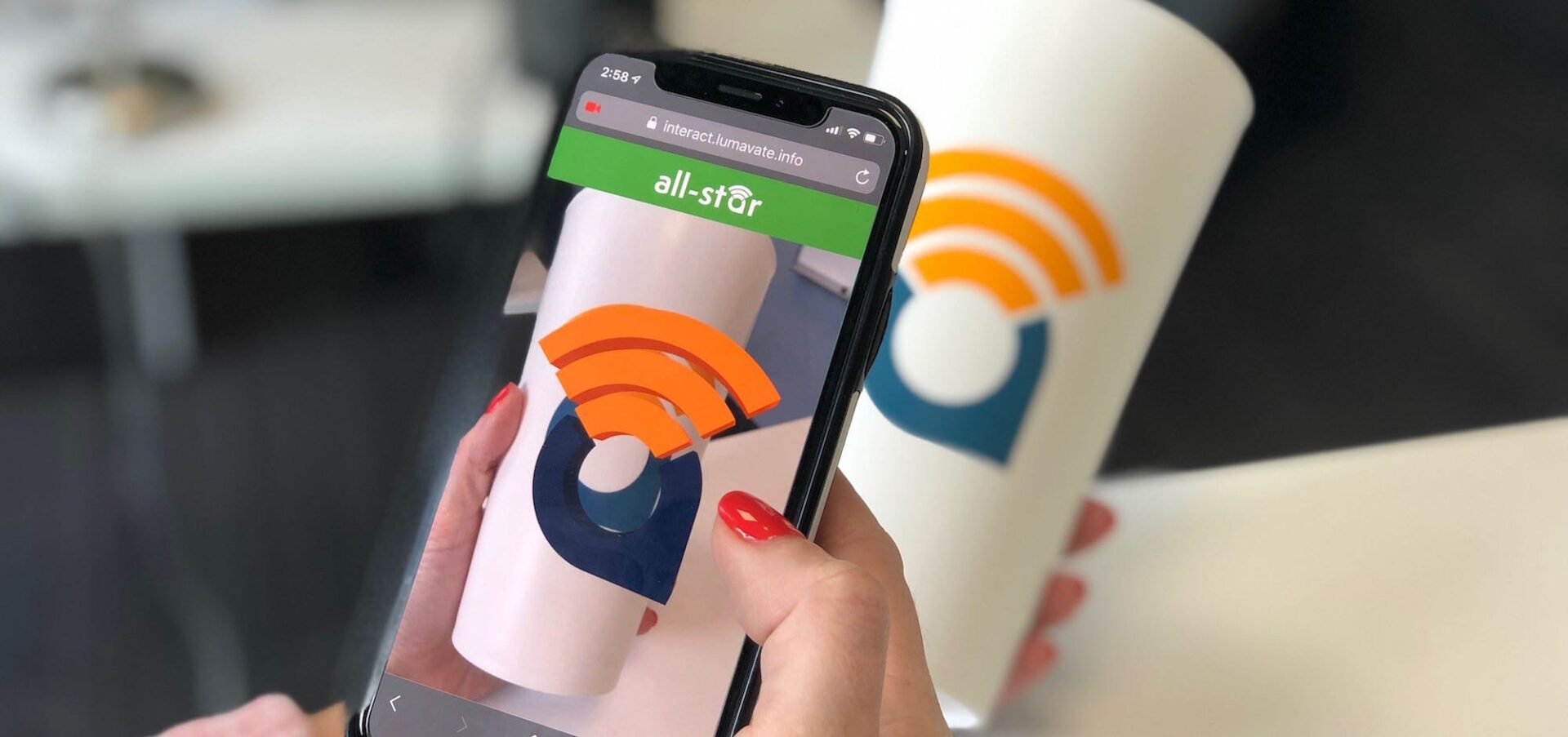Lumavate helps customers leap ahead with new progressive web apps functionality
When major brands want to engage with their customers in a different way on mobile, it’s fast-growing Indianapolis-area tech company Lumavate that makes it all possible.
One of the latest examples of how their platform is being used by well-known consumer brands was bringing an interactive cup to life. Each cup included an exclusive short code texted in by fans, which took them to a customized progressive web app (PWA) that was built using the Lumavate platform. The PWA included advanced technology like image recognition that triggered an augmented reality (AR) experience, highlighted branded video content, and provided users with a coupon for their next purchase.
“A big part of our recent $3 million growth capital announcement is that we have also introduced new functionality that accelerates our customers’ ability to create and launch progressive web apps faster than ever before,” said Stephanie Cox, vice president of sales and marketing.
Lumavate raised more than $3 million in its latest funding round, bringing its total raised to approximately $10 million since 2015. The round included participation from BioCrossroads, Elevate Ventures, Collina Ventures and 4G Ventures. This funding will allow Lumavate to continue to expand its progressive web apps product offering and grow its product, sales and marketing teams.
PWAs look and act like native mobile apps, but users don’t have to go to an app store or wait to download anything. They are fast, reliable, work on any browser, and they still support device functionality such as notifications, camera, geolocation and other background functions that make PWAs feel more like native apps.
PWAs are still relatively new, having only been around for about four years, but there are a lot of platforms out there competing to become the market leader. “What sets Lumavate apart is that our software is designed to meet the needs and wish lists of both marketers and developers, which is not the case with our competitors,” Stephanie said.
“Developers love our software because they can develop faster than ever before while still being safe, compliant and scalable. Their code is more productive because it’s available in their Lumavate Studio allowing the functionality to be plugged into hundreds of apps without having to recode the same functionality every time. Marketers love it for some of the same reasons, but the speed to market and overall cost savings of producing hundreds of customized apps is truly a leap forward for marketers.”
More product details from Lumavate’s recent press release.
Marketers can easily build apps start-to-finish using the Lumavate Library while development teams can write their own widgets, microservices and components in their favorite programming language extending the platform in both function and integration.
The new features include:
Launch of Starter Kits to enable users to quickly deliver mobile apps for pre-determined use cases such as events, image recognition, internal communications, product registration and onboarding, and more.
Expansion of the Lumavate Library to include additional widgets, microservices and components that are made available directly within the platform.
Streamlined version management through the Command Center that provides the ability to easily manage multiple versions of widgets, microservices and components across multiple Lumavate Studios.
Option to preview across desktop, tablet and mobile in the Lumavate Studio to ensure the PWA looks great across all devices along with the ability to set your preview preference for each app.
Another advantage Lumavate touts is that its platform is code agnostic, both internally and externally. Customers using the platform can develop in any coding language they choose and it will work with the Lumavate platform. The same goes for the platform itself and the new developers Lumavate plans to hire to keep up with demand for its products.
“Every microservice and widget can be coded in whatever language you choose,” Stephanie said. “If you like Python, code it in Python. If you like Angular, code it in Angular or Google Go. It doesn’t matter what language you’re using. You can actually develop an app that uses microservices and widgets created in multiple languages and they all work flawlessly together in one app.”
To learn about the latest in mobile and web strategies, tech and best practices, you can listen to interviews with thought leaders from brands across all industries on the company’s “Mobile Matters Podcast.”
Recent episodes include in depth conversations with Zack Argyle, software engineering manager at Facebook and former engineering manager at Pinterest; Alex Russell, senior staff software engineer at Google; and more than 30 other podcasts with executives from Samsung, MGM Resorts, Oracle, Crayola, GE, Campbell’s Soup, IBM, Microsoft, DemandJump and Allegion.




